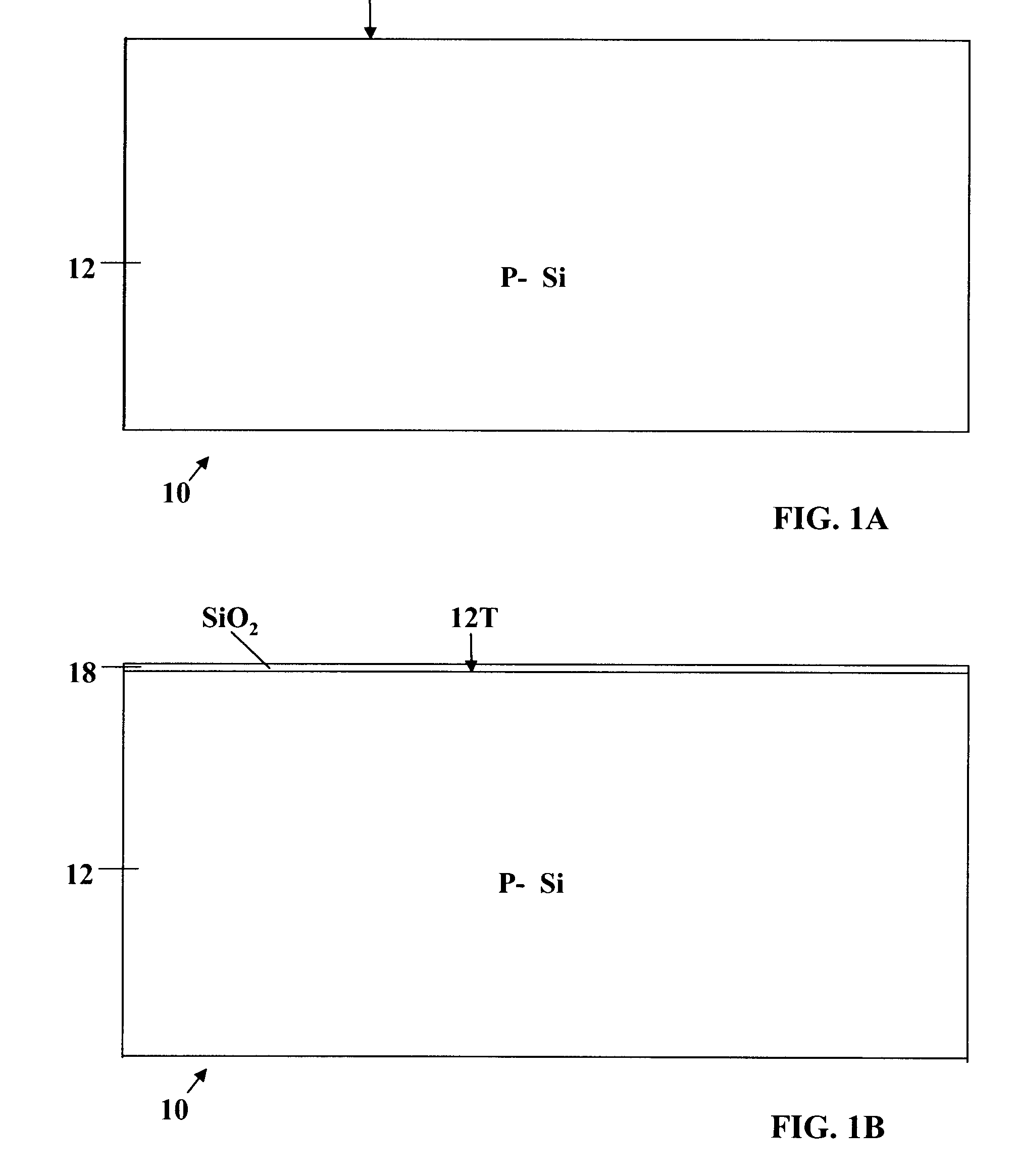Planar ultra-thin semiconductor-on-insulator channel mosfet with embedded source/drain
a semiconductor-on-insulator and channel technology, applied in the field of mosfet devices, can solve the problems of poor stress transfer to the channel, high gate-to-source-drain capacitance, loss of performance, etc., and achieve the effect of reducing overlap capacitance, reducing channel strain variations, and improving performan
- Summary
- Abstract
- Description
- Claims
- Application Information
AI Technical Summary
Benefits of technology
Problems solved by technology
Method used
Image
Examples
first embodiment
[0029]FIG. 1A shows a sectional view of a device 10 in accordance with this invention in an early stage of fabrication in accordance with step A of FIG. 3. The method begins preferably with a substrate 12 composed of conventional bulk semiconductor material selected from group IV periodic table elements and compound semiconductors from groups III-V and II-VI. For example silicon, germanium, silicon-germanium, and silicon-carbide are group IV periodic table elements which may be employed. Compound semiconductors from groups III-V and II-VI include such materials as GaAs, InP, and AlGaAs.
[0030] The semiconductor substrate 12 may comprise a thick portion under all the BOX regions of a first semiconductor.
[0031] Preferably the substrate 16 that can be formed by epitaxial growth of an upper, second semiconductor region on a substrate composed of a first semiconductor region 12. That is to say that one starts with a laminated semiconductor substrate which does not initially contain a bu...
second embodiment
[0064]FIG. 2 shows a second embodiment of this invention comprising a device 100 which is similar to the device 10 of FIG. 1W, but which has been modified by the formation of the structure on a BOX substrate 11 as compared with the bulk substrate 11 of FIGS. 1A-1W. In addition, the lower BOX regions 226L are shown overlapping the BOX1 region 214 so that the depth D5 of the top surface of the lower BOX regions 226L is less than the depth D3 of the top surface of the BOX1 region 214. The device 100 can be manufactured in accordance with the steps shown in FIG. 3.
PUM
 Login to View More
Login to View More Abstract
Description
Claims
Application Information
 Login to View More
Login to View More - R&D
- Intellectual Property
- Life Sciences
- Materials
- Tech Scout
- Unparalleled Data Quality
- Higher Quality Content
- 60% Fewer Hallucinations
Browse by: Latest US Patents, China's latest patents, Technical Efficacy Thesaurus, Application Domain, Technology Topic, Popular Technical Reports.
© 2025 PatSnap. All rights reserved.Legal|Privacy policy|Modern Slavery Act Transparency Statement|Sitemap|About US| Contact US: help@patsnap.com



